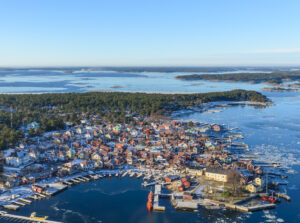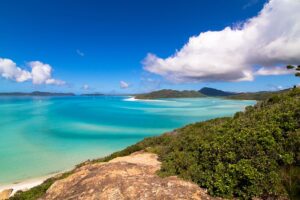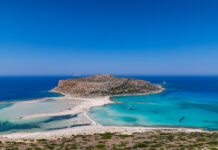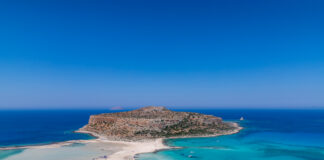- Sweden: Sweden boasts around 267,570 islands, making it the country with the highest number of islands globally. From the stunning Stockholm Archipelago to the remote islands of Gotland and Öland, Sweden offers a diverse range of island experiences. Visitors can enjoy pristine beaches, charming fishing villages, and opportunities for outdoor activities like kayaking, hiking, and wildlife spotting.

- Finland: Finland is known for its incredible archipelagos, consisting of approximately 179,584 islands. The Finnish Archipelago offers a tranquil escape with its rugged coastlines, picturesque lighthouses, and unique flora and fauna. Visitors can explore the Aland Islands, the largest archipelago in Finland, and enjoy sailing, fishing, and island hopping in this breathtaking natural paradise.
- Norway: With around 55,000 islands, Norway offers a dramatic and rugged landscape. Norway's islands provide unparalleled natural beauty, from the famous Lofoten Islands with majestic mountains and picturesque fishing villages to the remote Svalbard archipelago in the Arctic. Visitors can witness the midnight sun, go hiking, spot wildlife, and even the mesmerizing Northern Lights.
- Canada: Canada is home to approximately 52,455 islands spread across its vast coastline. From the remote Arctic islands to the Gulf Islands in British Columbia, Canada's islands showcase diverse ecosystems and breathtaking scenery. Visitors can enjoy wildlife encounters, kayaking, whale watching, and exploring the unique cultural heritage of the indigenous peoples.
- Indonesia: Indonesia, an archipelago of around 17,508 islands, offers a tropical paradise like no other. From Bali's stunning beaches to the Komodo Islands' iconic dragons, Indonesia's islands captivate with their vibrant marine life, lush rainforests, and rich cultural heritage. Visitors can indulge in world-class diving, trek through volcanic landscapes, and immerse themselves in unique local traditions.
- Philippines: The Philippines has approximately 7,641 islands, each with a distinct charm. From the idyllic beaches of Palawan and Boracay to the chocolate hills of Bohol, the Philippines' islands offer a tropical paradise for beach lovers and nature enthusiasts. Visitors can enjoy snorkeling, diving, island hopping, and exploring historic Spanish colonial towns.
- Greece: Greece boasts an impressive 6,000 islands across the Aegean and Ionian Seas. Greece's islands are steeped in history, culture, and natural beauty, from the iconic Santorini and Mykonos to the lesser-known gems like Crete and Rhodes. Visitors can explore ancient ruins, enjoy the famous Greek cuisine, and soak up the sun on pristine beaches.

- Japan: Japan is surrounded by around 6,852 islands, with the four main islands being Honshu, Hokkaido, Kyushu, and Shikoku. From the tropical Okinawa Islands to the remote and picturesque Ogasawara Islands, Japan's islands offer diverse landscapes and experiences. Visitors can discover ancient temples, relax in hot springs, witness cherry blossoms, and indulge in delicious seafood.
- Australia: Australia, known for its vast coastline, is home to approximately 8,222 islands. From the world-renowned Whitsunday Islands to the unique wildlife haven of Kangaroo Island, Australia's islands offer a remarkable blend of natural wonders. Visitors can explore the Great Barrier Reef, hike through national parks, and encounter iconic Australian animals.

- United States: The United States has around 5,000 islands across its coastal regions. From the tropical beauty of Hawaii's islands to the rugged landscapes of the Alaskan archipelago, the U.S. islands offer diverse experiences. Visitors can enjoy surfing in Hawaii, explore the Everglades in the Florida Keys, or witness the majestic glaciers of Alaska's Inside Passage.















